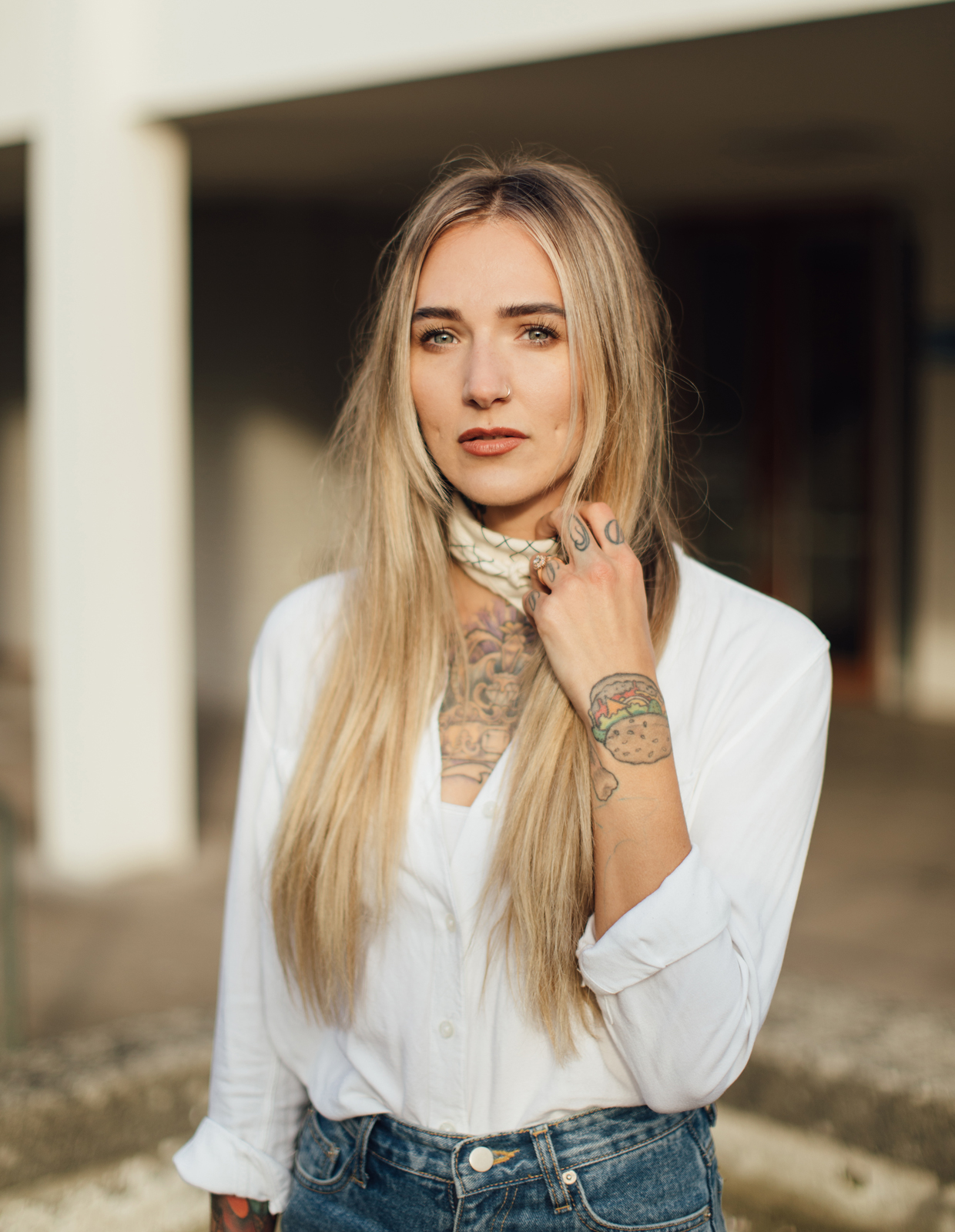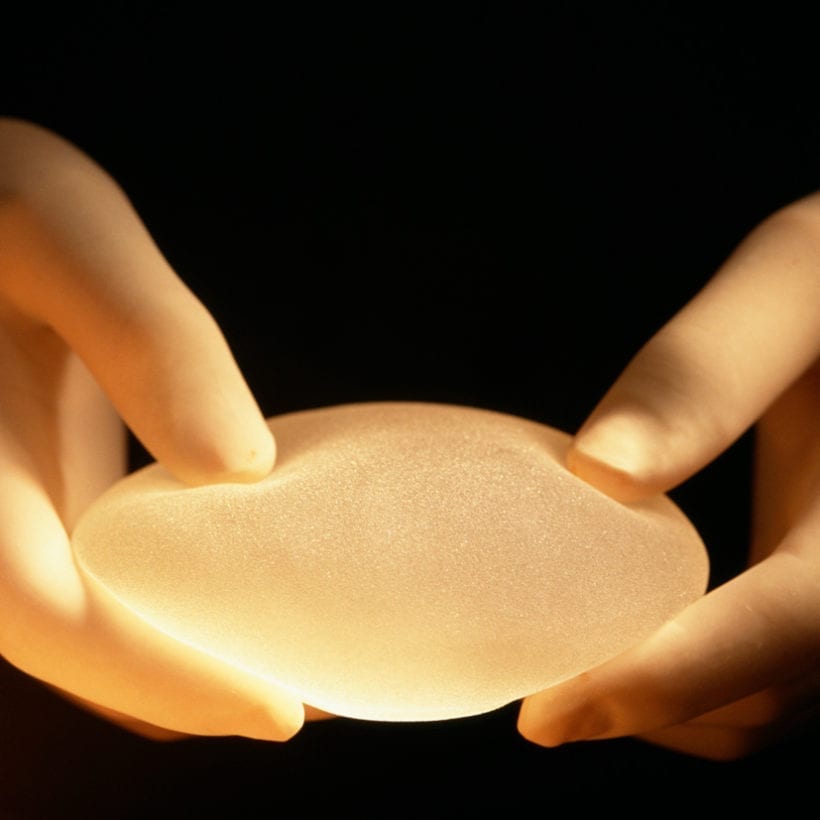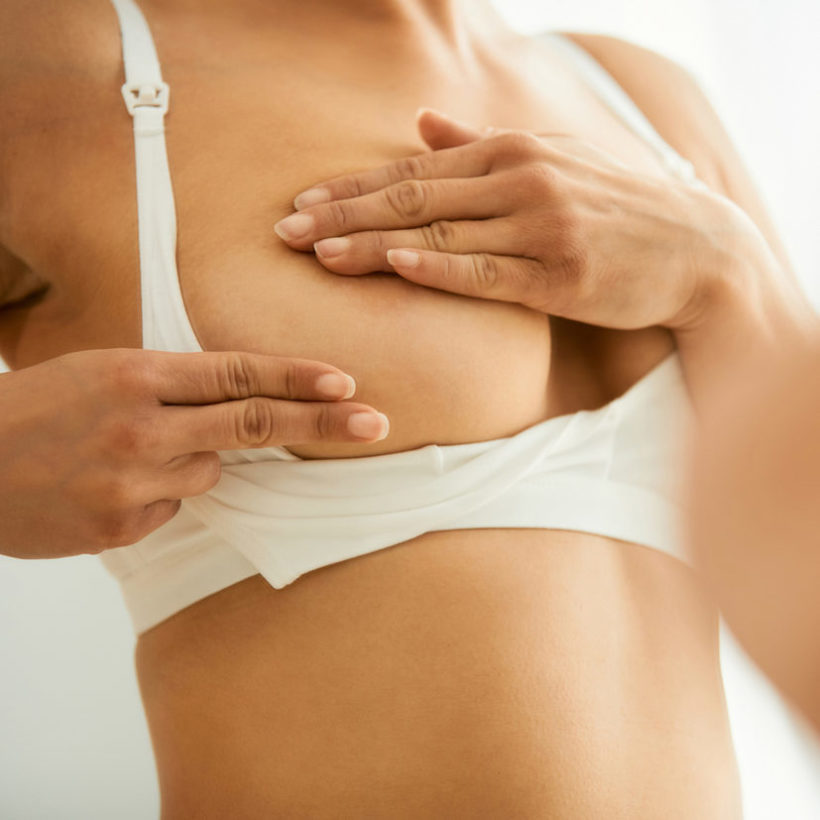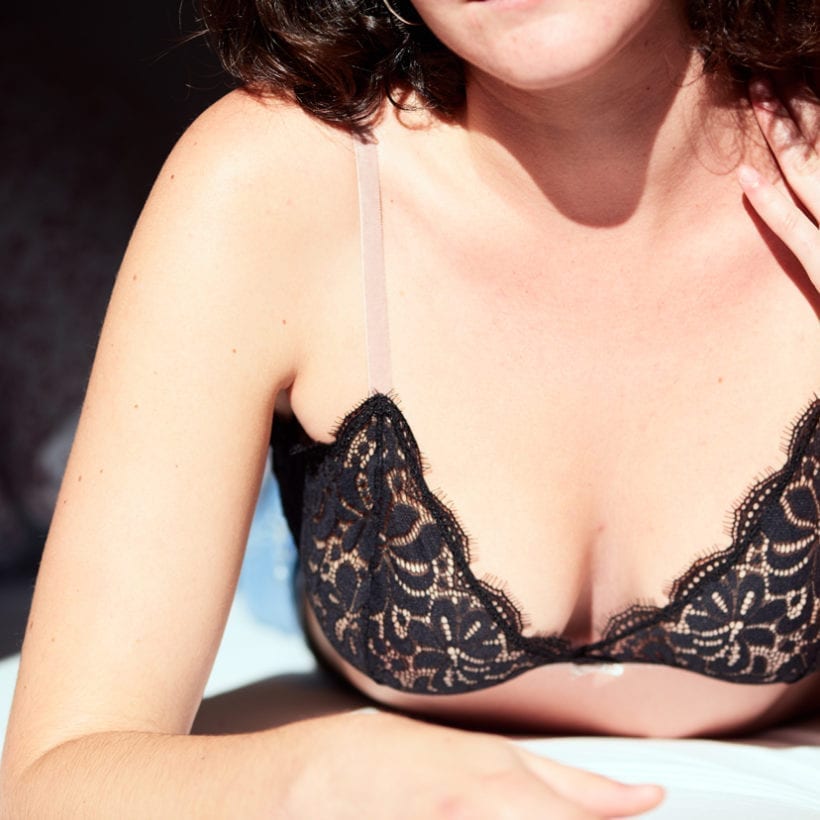There are tons of reasons why people might get a tattoo, whether it’s in honor of someone they loved and lost, a way to express creativity, or (perhaps regrettably) an impromptu decision from a night out with friends. For permanent tattoo artist and co-founder of Studio Sashiko, Shaughnessy Otsuji, the experience for her clients is usually an extremely emotional one in helping them rebuild their connection with their bodies. A significant portion of her customers consists of breast cancer survivors who are looking for hyper-realistic body art. They include post-chemotherapy patients hoping to achieve natural-looking eyebrows or areola restorative tattooing following a mastectomy or breast reconstruction.
Otsuji, who’s planning on opening her new studio in L.A. later this year, is dedicated to helping people feel good about themselves and regain confidence after experiencing hair loss, scarring, and other side effects of cancer. Needless to say, we — and her nearly 100K social media following @shaughnessy — are inspired by her creativity and the impact she’ll continue to have for the community and beyond. Get to know her story below:
 Sunday Edit: How did you start off as a tattoo artist?
Sunday Edit: How did you start off as a tattoo artist?
Shaughnessy Otsuji: “When I was attending Emily Carr University of Art and Design, I was working as a receptionist at a tattoo studio at The Fall in downtown Vancouver. So just being around the front desk every day, we would get women coming in who were asking if we did permanent eyebrow tattoos or eyeliner. This was eight years ago when it wasn’t a ‘trend’ yet. I realized first hand that this was something that people wanted, but the work that I was seeing out there — at least in Vancouver at the time — wasn’t very natural looking. So, I was pretty determined to create something that was more realistic. I ended up training in the cosmetic side of tattooing first, and I was already working in that tattoo studio. So as soon as I was ready to take clients, I got quite busy, right away.”
SE: What was the training like?
SO: “My experience attending the art university helped me draw a lot of realism and more detailed work. It’s the hands-on experience at the studio, though, that grew me quickly. Frankly, a lot of the courses in permanent makeup nowadays are only two or three days. For me, coming from that tattoo studio background, I’m used to people having to take an apprenticeship for about six months to a year. I went into it thinking I’d take this week-long course and learn what I could, but then also work with my tattoo artist colleagues directly. And that really worked out well for me. Whereas I think a lot of artists who are getting into it now are really struggling because those short, two-day courses are not enough to teach you any kind of skill.”
SE: When did you first realize that permanent tattooing could be more than just a trend?
SO: “I saw many women drawing their eyebrows every day. So, initially, I thought it was going to be a very cosmetic thing, but within three weeks of starting to take clients, I was already getting clients who had alopecia and clients who’d gone through chemo, and their hair didn’t really grow back. I also had trans clients who didn’t have the bushy brows that they wanted. It fueled that passion in me right away. I realized this is so much more meaningful than just giving people eyebrows.”
SE: Who inspired you to start doing areola restorative tattooing, in particular? And, where did you learn to do it?
SO: “My aunt — who’s actually my mom’s family friend — was always a really amazing supporter of mine and what I was doing in the studio. She had a preventative double mastectomy because her mom passed away from breast cancer. They remove all the tissue, they remove the nipples, and then there’s the process of putting expanders in. She tried to get the nipple reconstructed by a surgeon, but it didn’t heal very well, and she had to get that part removed again. Before I learned how to do it myself, she had previous nipple tattooing, but it wasn’t at all what she was expecting. She just kept telling me that I should pursue learning how to do it, and it made sense. So, about three years ago, I did a separate training for that as well. I have a mentor, Stacie-Rae. She’s a traditional tattoo artist who specializes in breast cancer reconstructive tattooing. I requested that we do one-on-one training, which is really helpful. And as soon as I sent her my drawings, she told me I’d be great at it.”
SE: What’s the process of areola restorative tattooing?
SO: “I always recommend that the tattooing should be the very last step of their cancer journey. It is the most fun part as well. If they are planning on getting any sort of ongoing reconstruction or any sort of revisions, we should always wait until those are done so that the breasts are fully settled. This will mean any swelling and redness have gone down. I usually recommend the scars be at least six months old depending on how thick the scar tissue is. As far as the tattooing process goes, it’s essentially just a regular, permanent body tattoo. I prefer to do an actual permanent tattoo as opposed to the semi-permanent ones that fade over time.
Since the area is so delicate, you don’t want to continue to add trauma to the area every year. And that’s usually a step that kind of lets people move on, essentially. It covers a bit of the scarring, and they can just get out of the shower and be like, ‘oh yeah, that’s what I’m supposed to look like.’”
SE: Is it painful for your clients to get this process done?
SO: “Pain would depend if they had a double mastectomy — there is about a 90% chance they’re not going to have any feeling in that area. It’s unfortunate, but it’s helpful when you’re getting tattoos there. Some clients who’ve had a single mastectomy may have a little bit of scarring on the side. It’s still natural that they will have a bit of feeling. I do have a numbing cream that I’ll use in those situations. I also work with the clients who just had breast revisions or a lift or a reduction, and they still have feeling, but there’s just scarring around the nipple area that they want me to blend out. So it really depends on the case, but overall it’s very manageable compared to other parts of the body.”
SE: What’s the recovery like?
SO: “I wouldn’t say that you should stop your whole lifestyle just because you got tattooed, but there are some precautions you want to keep in mind. Excess moisture is definitely something you want to avoid. I always say no sweating and swimming for at least ten days afterward, if possible. Showering is totally fine, but you do want to keep the area as clean and dry as possible. It’s the same as any tattoo: Excess moisture is a breeding ground for bacteria. It also builds up too much excess scabbing that we don’t need. I do have them bandaged when they leave, so they’re comfortable. So during that healing period of about ten days, you don’t want to put any sort of products on the area — even SPF — until it’s fully healed. Afterward, if you get permanent tattooing done on an area that’s exposed to the sun frequently, like your eyebrows, sunscreen is a must.”
SE: Is there any maintenance they need to do?
SO: “I do offer a touch-up usually after a couple of months. The only reason for that is just because of the scar tissue because it’s a little unpredictable how things will heal on top of scarring. But sometimes I like just to go in and do a perfecting session, but after that, they are good forever.”
SE: Is there anyone who should avoid restorative tattooing?
SO: “I do always recommend that clients chat with their doctors before making that final step because you’re going to go through a bit of an open wound healing process. It’s very minimal, but you never know. Sometimes they’re a little more prone to infection if they’ve just recently finished chemo.”
SE: Can you speak to your favorite story on how the areola restorative tattooing changed someone’s life?
SO: “I had one client who had a double mastectomy quite a long time ago, and she never really thought that anyone would care if she had nipples or not. Eventually, I think her daughter convinced her that tattooing might make her really feel better about herself. The client told me that before she got it done, she would just walk around with her towel on her waist because she didn’t feel the need to cover up at home in front of her kids. She felt like [without nipples] it wasn’t nudity. So, when she got the areola restorative tattooing done, she felt like she needed to cover up again. She was so excited. I had so many clients tell me that their relationships have just flourished because they’re so much more confident about their bodies.”
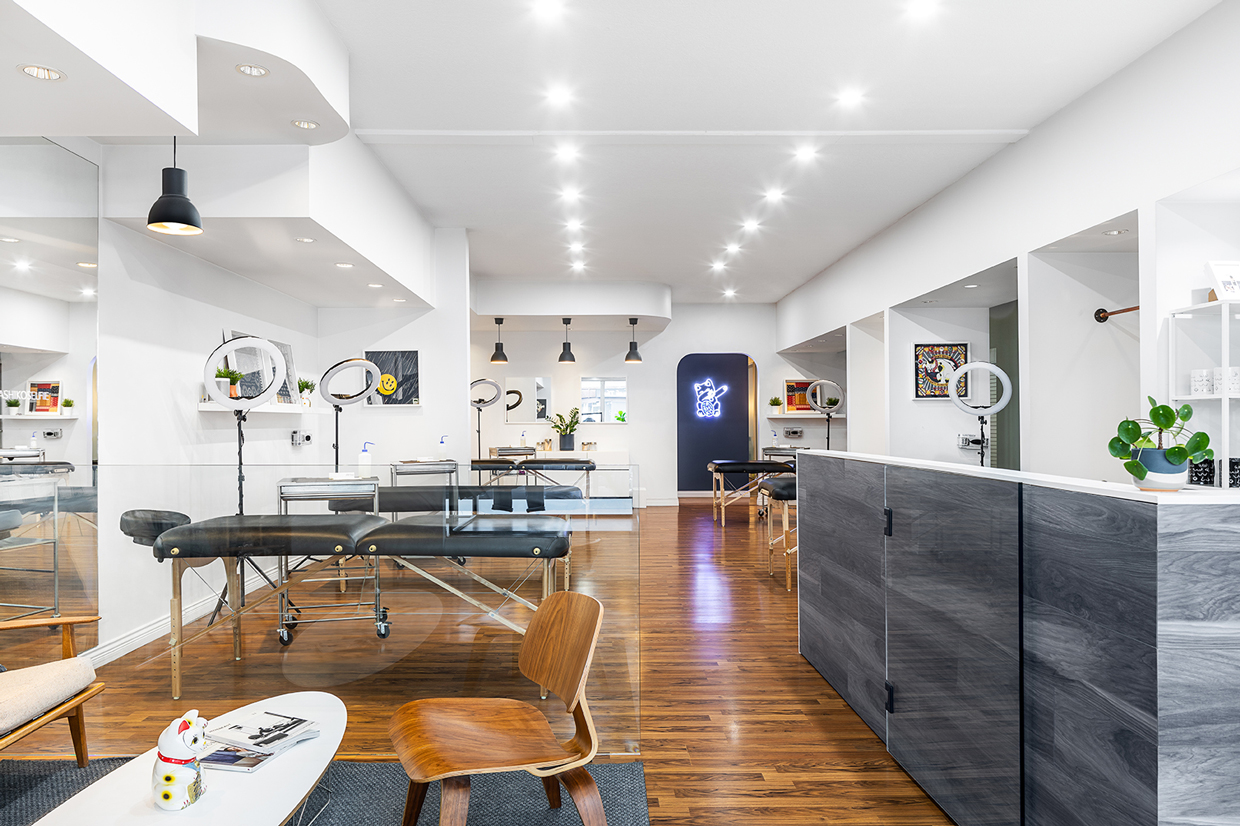
SE: We’re so excited to hear about your new studio opening. What’s the inspiration behind the name, Sashiko?
SO: “My husband and I own the studios together. Sashiko in Japanese means ‘little stabs.’It’s basically an intricate embroidery style that was done on a lot of vintage Japanese Boro fabrics. It was all done by hand, and it really made sense to what we were doing. We loved mid-century modern Japanese design. We wanted the whole brand to embody that. We really value the artists that work with us, too. We don’t want to just be known as a beauty studio where you go get your brows done. We want people to follow us because of the artists that work for us and the work that we create and the people that we help. So that’s the inspiration behind that.”

